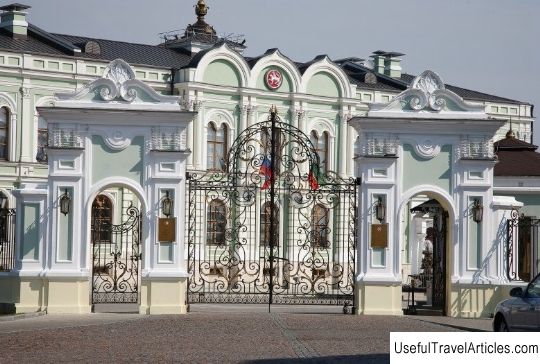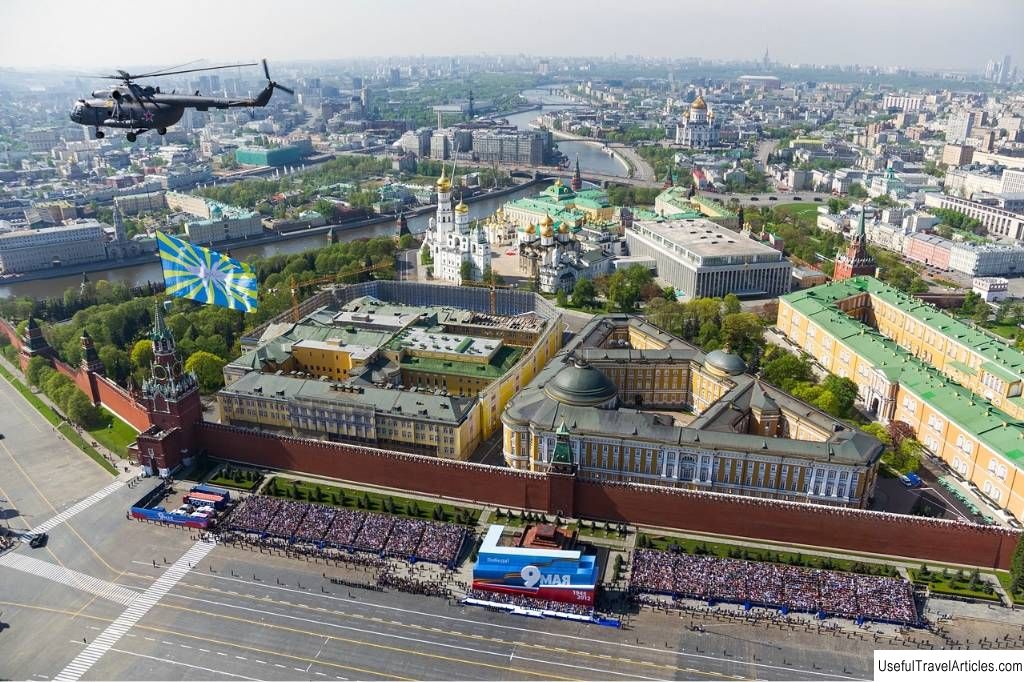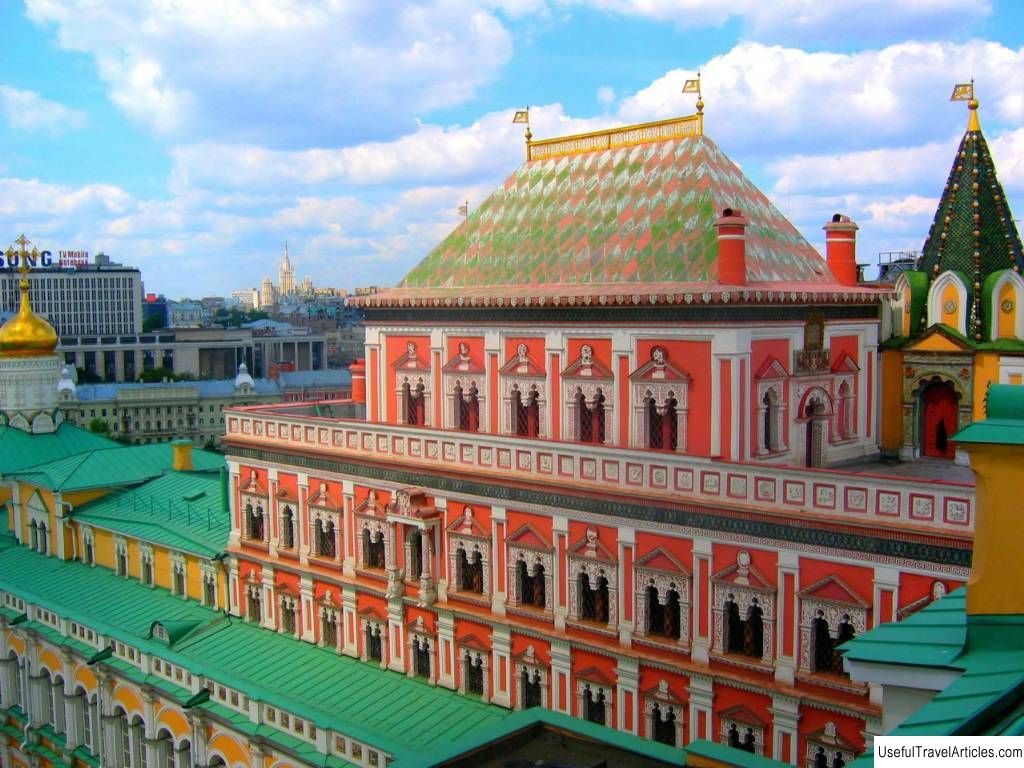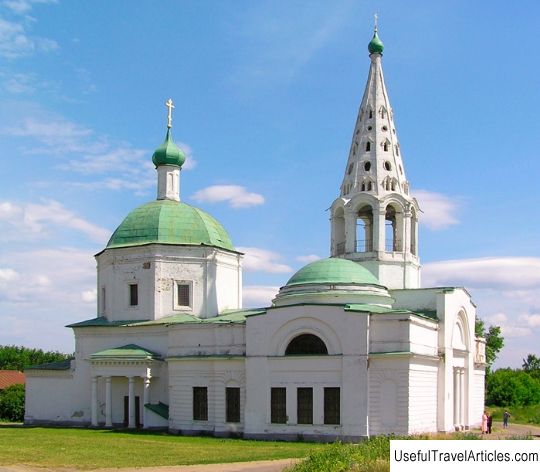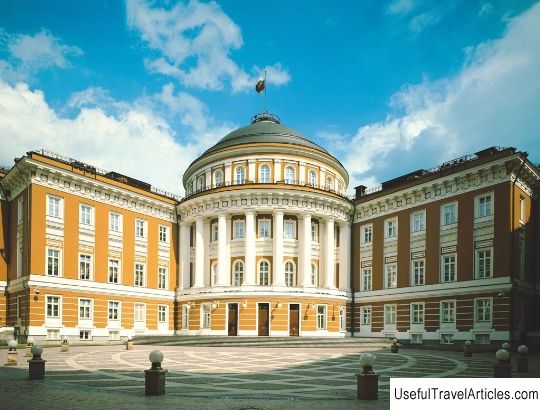Grand Kremlin Palace description and photos - Russia - Moscow: Moscow
Rating: 8,5/10 (1221 votes) 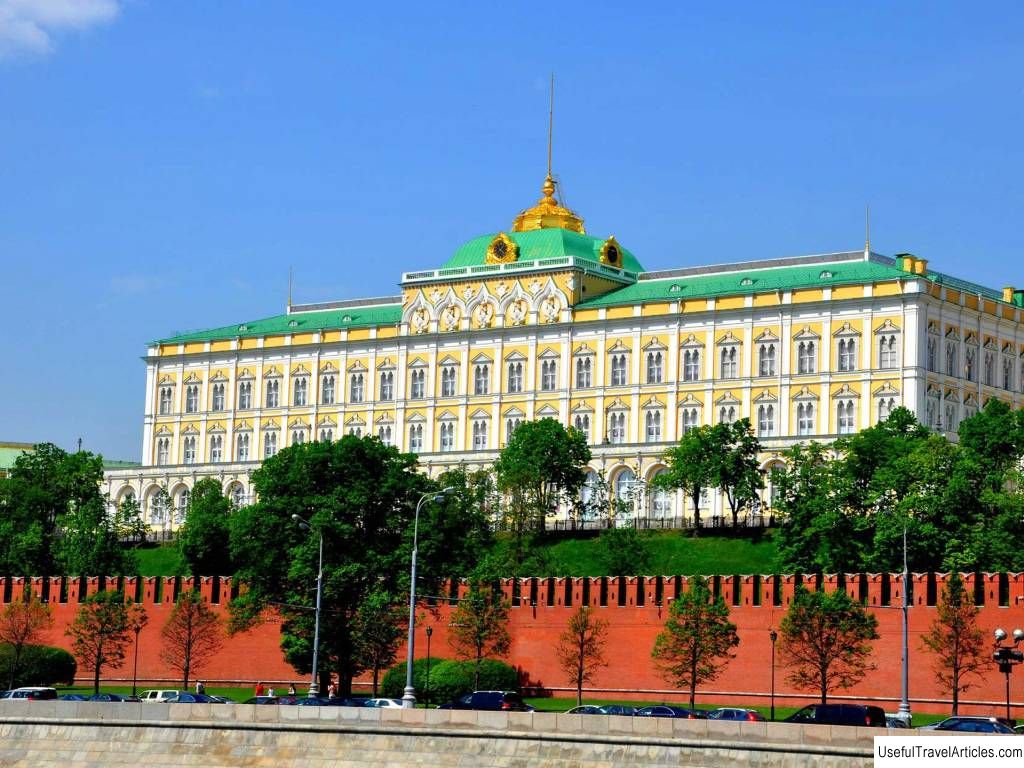
Grand Kremlin Palace description and photos - Russia - Moscow: Moscow. Detailed information about the attraction. Description, photos and a map showing the nearest significant objects. Photo and descriptionAmong other structures and buildings of the Moscow Kremlin, the Great Kremlin Palace stands out. Its architectural ensemble includes not only the main building of the palace, but also the Armory, temples, Terem Palace and the apartments of the grand dukes. The Grand Kremlin Palace in Moscow was built in the first half of the 19th century by the architect Konstantin Ton. The history of the Kremlin palacesThe palace complex of the Moscow Kremlin first began to be built at the end of the 15th century. Then the architect Aleviz Fryazin supervised the construction of several chambers, including the Faceted one, and the Terem Palace. According to his project, the Palace of Tsarina Natalya Kirillovna and mansions for princesses were also rebuilt, the Embankment Garden was laid out. At the beginning of the 18th century. the capital was moved to St. Petersburg, and the original significance of the palace complex in the Moscow Kremlin was lost. Some buildings housed employees of various government agencies that remained in Moscow, other buildings were gradually dilapidated and destroyed without supervision and maintenance. Anna Ioannovna visited Moscow often her yard stayed in the Kremlin buildings. Elizaveta Petrovna , who succeeded her on the throne, took up the reconstruction of the imperial residence. It was decided to build a Winter Palace, where the Empress and her retinue could stay during their Moscow voyages. For the successful implementation of the project, several buildings had to be demolished, including the Embankment and the Middle Golden Chamber. Their basement floors later served as the basis for a new palace. His project was created by the famous court architect Rastrelli . Catherine II did not appreciate the beauty of the Baroque Rastrelli palace, which has almost a thousand rooms, halls and offices, and considered it "Not corresponding to imperial greatness." Despite the decree she issued on the preservation of the Kremlin walls and towers, some of the buildings, including the palace of Elizabeth Petrovna, were dismantled. The architect Vasily Bazheno came up with a new project for the development of the territory of the Moscow Kremlin, which involved the construction of new structures and their integration with the existing ones into a single ensemble. Construction of the Grand Kremlin PalaceNicholas I decided to build a coronation palace in the Kremlin.On behalf of Konstantin Ton did it perfectly well. In 1837 the workers, under the guidance of the architect, dismantled the old palace of Elizabeth Petrovna together with the Konyushenny yard. The project assumed the compositional unity of the new building with the ancient Kremlin buildings. The complex of the new imperial residence was supposed to include the Amusement Palace with the Faceted Chamber, house churches and the new building of the Armory. In March 1838, a royal decree was issued on the immediate start of construction. On June 30, the foundation stone of the palace was laid, - The use of modern building materials - concrete and cement - allowed the architect to design and implement the grandiose idea of building a suspended ceiling in the St. George Hall . - In the palace dome equipped with four dormer windows, the bells of the striking clock transferred to the palace from the Trinity Tower. A flagpole was placed at the top of the dome, and the spire was surrounded by a circular viewing gallery. For fire safety purposes, the dome and the roof were tied with metal lightning rods. - The palace was heated using a system of air heaters , which were installed in the basements. Heat from more than fifty devices was uniformly supplied to all palace premises through thermal channels. Interiors The Grand Kremlin Palace was decorated on a grand scale. The main materials used by Fyodor Richter and his team, who led the practical construction, were precious woods, Kolomna marble, Revel stone, fabrics and draperies with gold and silver threads. The furniture was made at famous Moscow factories, where experienced cabinetmakers worked. They also skillfully carved the doors of the front and residential apartments. The Emperor highly appreciated the efforts of architects and builders and awarded many of them with medals and prizes. The Grand Kremlin Palace was consecrated on April 3, 1849 on the day of Easter in the presence of the imperial family and Metropolitan Filaret . The construction was fully completed in 1851 ., when the Armory and the apartment building of the Grand Dukes were handed over. Before and after the revolution In the 19th century, the Grand Kremlin Palace continued to be rebuilt and equipped. The works also affected the ancient buildings that were part of the ensemble. So for the premises of the Terem Palace they made new furniture and window frames from an oak massif, and its walls and vaults were re-painted. In the Big Palace itself, the roof was primed and the plaster was repaired every year, the preservation of the throne canopies made of ermine fur. In 1883, temporary electric lighting was installed in the palace, and the coronation celebrations were held in full illumination. The palace received its own power supply system in 1895. This made it possible to provide alarms for the premises where especially valuable items were kept, and to install elevators in the palace. At the beginning of the twentieth century, the imperial residence in the Kremlin was connected to the city sewerage system, and its water supply and drainage communications were thoroughly reconstructed. The year 1917 brought global changes. In the premises of the palace, despite the appeal of the People's Commissar of Education Lunacharsky , they arranged not only the residence of the government, but also residential apartments for family members of representatives of the new government and their servants. People's Commissar Lunacharsky, as well as scientists, historians, artists unsuccessfully tried to draw attention to the values and rarities kept in the palace. Antique tapestries of the 18th century were soaked in the steam of boiling samovars, and housewives dried and ironed linen on handmade wooden Bavarian tables. In the 30s. the bulk of the tenants still received apartments in the city and moved out, although the most stubborn centenarians continued to remain in the Grand Kremlin Palace until 1962. In 1934, it was decided to rebuild the palace. The new government dismantled the Red Porch of the Faceted Chamber and arranged a dining room in its place for delegates to congresses and plenums. The Cathedral of the Savior on Bor was dismantled to erect a hotel , and the Andreevsky and Alexander halls of the palace were turned into a proletarian meeting room . The dismantling of the fundamental wall between the halls led to the formation of numerous cracks in the facade of the palace. To avoid destruction the builders were forced to reinforce the structure with a massive balcony, which protruded until the middle of the resulting meeting room. On the site of the emperor's throne, a sculpture of Ilyich was erected. During the Great Patriotic War, the roof of the palace was masked with paint to make the structure not too visible from the air - they feared bombing. And yet, despite all efforts, the palace was badly damaged . One of the bombs pierced the vaults of the St. George Hall, damaging the parquet floor and ceiling. Another shell exploded at the entrance, and the blast wave shattered glass and broke the front door. The soldiers who served in the Kremlin garrison during the war defused hundreds of incendiary bombs and actually saved the palace from significant destruction. The Grand Kremlin Palace in our time In the 90s of the last century it was possible to restore the original appearance of Andreevsky and Alexander Halls . Restorers have recreated the royal place and the thrones , returned the ancient bas-reliefs on the palace facade, repaired the marble walls and steps of the main staircase. Today the palace houses the residence of the President of Russia ... During the tour, visitors to the palace can see most of the rooms and halls: - The largest ceremonial hall of the palace is Georgievsky . He was named part of the Order of St. George the Victorious. In this hall, solemn ceremonies for the presentation of awards and prizes are held. - Alexandrovsky Hall named part of the Order of St. Alexander Nevsky. Particularly noteworthy are doors covered with silver and decorated with gold ornaments, and an elliptical dome containing images of the order's stars and coats of arms. The parquet floor of the Alexander Hall is made of wood of thirty species of trees. - Vladimirsky Hall is illuminated in the daytime through a hole in the hipped dome. In the evening, a chandelier made at the F. Chopin factory in St. Petersburg is lit in it. The parquet is made of precious woods, and the walls and pilasters are faced with pinkish marble. - In Andreevsky Hall , according to tradition, only the king could sit, and therefore furniture, except for the imperial throne , it was not and is not. - Furniture The Cavalry Hall is made of plane trees. Thus, the designers paid tribute to the traditions of the Caucasian peoples, whose representatives served in the honor guard of the palace. On the first floor of the Grand Kremlin Palace, there are also the private chambers of the emperor and his family, the imperial dining room, study rooms and bedchambers. On the second floor, tourists are attracted by the elegantly decorated Green Living Room , in which the Empress received guests of honor.         We also recommend reading Resurrection Cathedral description and photos - Russia - North-West: Vologda Topic: Grand Kremlin Palace description and photos - Russia - Moscow: Moscow. |
